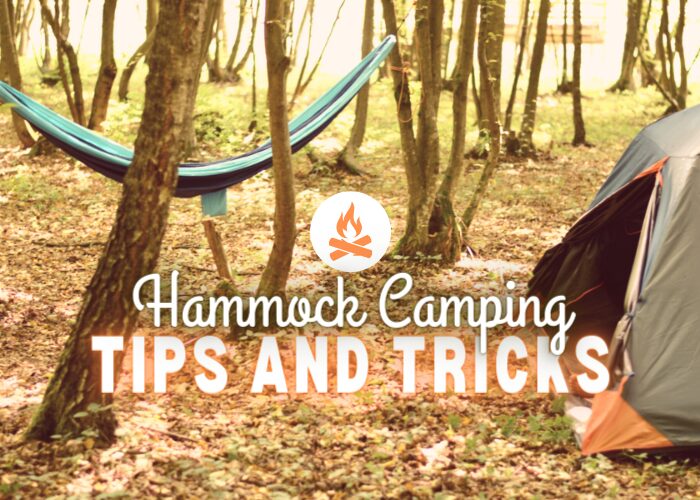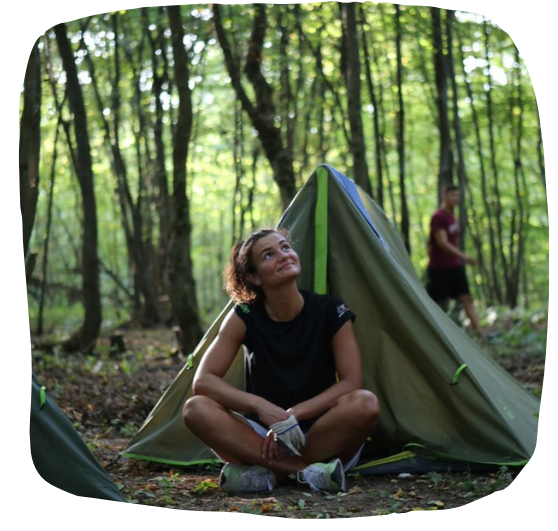Everybody who loves hammock camping also loves hearing tips and tricks to make their time more enjoyable. I’ve made our own list and we hope you are able to find something that helps you out. If you know something that I don’t then please leave me a comment below the post; I would love to hear it!
Contents
Here are my 19 Tips and Tricks for Hammock Camping:
19. Set Up A Fly/Tarp Early
Sometimes when I am camping with my hammock, I am expecting to take in the sun and wait until a little too late to set up my fly or tarp. Sometimes this is just mildly irritating, but if you have valuable gear sitting in your hammock this could be devastating.
Another issue that you could have by setting up your shelter too late is trying to set it up after dark. Setting up a hammock or tent after dark is always frustrating, it can be especially awful if you’ve had too many drinks if that applies to you.
18. Bring a Stove
You can’t go wrong when you bring a stove with you. There are different types of stoves so just choose the one that works for you. Some things you might have to keep in mind are; how much it weighs, and what kind of fuel it uses. Some people prefer to cook over a fire but you can’t always do that.
If you can’t have a fire because you can’t get one started, or maybe there is a fire ban on in your area, then the stove is a lifesaver. There are some places that you are never permitted to light open fires and it is absolutely required to have one. Whatever the case, make sure you know how to use it before you head out on your camping trip, you might have to practice lighting it a few times if you have never used one before.
17. Sleep on an angle
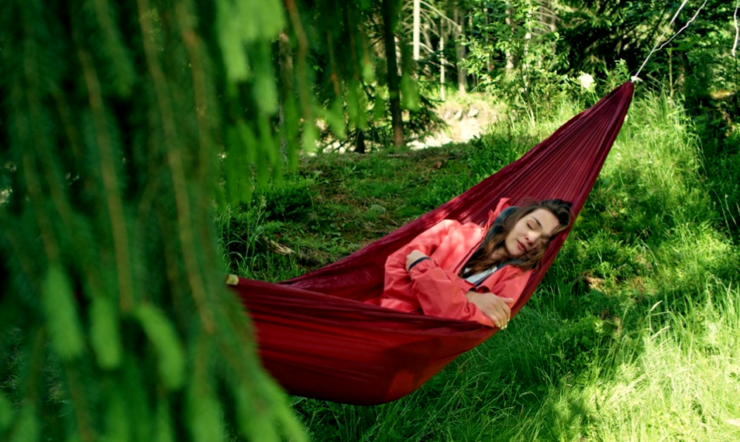
A lot of people don’t know this but you aren’t necessarily supposed to sleep directly in line with the angel that the hammock hangs on. Hammocks were designed for you to lay with your head and feet slightly off-center, that way when you stretch out you can lay with your back completely flat.
Another issue that happens by trying to sleep incorrectly in a hammock is having your body slide inwards towards the center. This is even more of a problem if you have your hammock set up at too steep of an angle. If you’ve been sleeping in a hammock the wrong way the whole time you are now in for a treat!
16. Hang Things Up
I like hanging things up, a lot, I even wrote an article called The 21 Best Accessories for hammock camping and most of those items were hangable. When you are camping with a hammock, hanging things is the most efficient way to store the items you have.
Hanging things is the most efficient way to go because you already have lines going around your camp. If you have the room you can hang things on your suspension or on your Ridgeline, but if you have heavier items to hang the I suggest doing this on a separate line.
15. Choose Your Hammock Wisely
I had said above that some hammocks don’t come with a bug net so these would be a bad choice if you’re going somewhere buggy (provided you didn’t bring an aftermarket bug net). Some hammocks don’t come with a fly, these would be a bad choice if you were going somewhere wet. Almost every hammock has pros and cons in certain situations.
If you plan using a hammock for camping, the two most popular choices are camping hammocks and parachute hammocks. We suggest getting a camping hammock because it’s easy and you get everything you need. Don’t confuse parachute hammocks with camping hammocksm camping hammocks usually come with a fly and bug net. Hennessy Hammocks, like the one I’ve recommended on our product page, is one of the few companies making real camping hammocks. (We also like Dutchware and Warbonnet for camping).
14. Tree-Friendly Tree Straps
I suggest using tree straps that are friendly to the environment. You can use the eco-friendly ones like the one I mentioned in my post about keeping the trees healthy, or you could use any type of strap that is 1 inch thick or greater. Straps that are 1 inch wide are pretty good on the trees even if they aren’t marketed as being eco-friendly.
I find it hard to believe that not everybody is using tree friendly straps; it’s just easy and cheap to do so. I really recommend against using a thin cord or rope as these are what are doing the most damage to trees.
Please do anything you can to help keep the environment enjoyable for the rest of us.
13. Use a Ridgeline
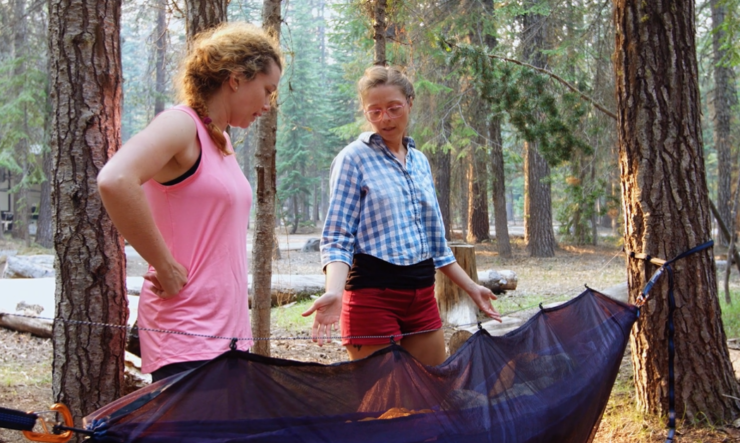
Earlier, I mentioned that I recommend using a ridgeline, in fact, I actually wrote a whole article on it. I like to use ridgelines because it helps me get the perfect sag to my hammock every time. I also believe that it lessens the regular wear and tear that is being put on our hammock because it is not being tugged on by the suspension. You can also use your Ridgeline to hang things, although you wouldn’t want to hang anything so heavy that it makes the ridgeline bend.
A couple of other things to note about ridgelines are that I would not recommend using paracord for the line as it is too stretchy and I also recommend leaving a ridgeline attached to your hammock when you put it away. Our favorite type of cord to use for a ridgeline is a whoopie sling.
12. Hand Free Lights
Speaking of ridgelines, one thing that we like to hang from them are lights. You can hang a flashlight straight down which could be good for reading or seeing into your hammock. If your headlamp has a belt clip then you can also use that to hang it too; it’s not difficult to hang headlamps with belt clips vertically either.
If you have a heavier lantern you could also hang it on a cord somewhere around your camp. You can also buy paper lanterns that can be charged by the sun or by way of USB. These are very convenient and they are pretty cheap which makes for a great option for campsite light.
11. Make Use of The Pocket
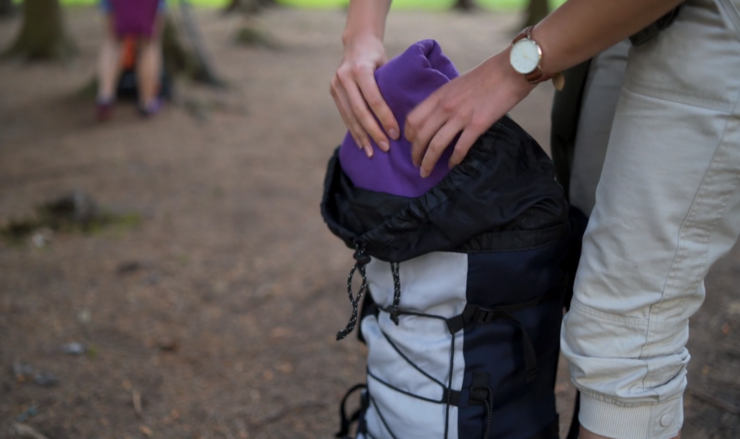
These days most parachute hammocks come stuffed inside a bag that it is meant to be stored in between uses. More often than not this bag is attached to it (although that’s not always the case). When the hammock is setup we like to call this bag “the pocket”.
The pocket is great for storing things in. I like to put my most important things inside of a waterproof bag and place that in it. I’m talking cell phone, toothbrush, flashlight and anything else that I overnight or in the morning. Most of the other accessories that we have we try to hang as you are probably aware.
10. Keep Things Dry
Everybody always says that you should keep things dry yet somehow this tip is still underrated. You should do everything you can to keep every piece of equipment you own dry. This should one of your be your number one priorities as it is a matter of safety. Here are some tips for keeping things dry:
- If your bag isn’t waterproof then line it with a garbage bag.
- Keep some matches and a lighter inside of a waterproof container.
- Always make sure your food is properly sealed, that’ll protect it against bugs and rodents as well.
- Keep a set of clothes in a dry bag
The point is to keep your stuff dry especially your clothing. This doesn’t mean you get wet at all but know when it is safe to be wet and have a way to dry off.
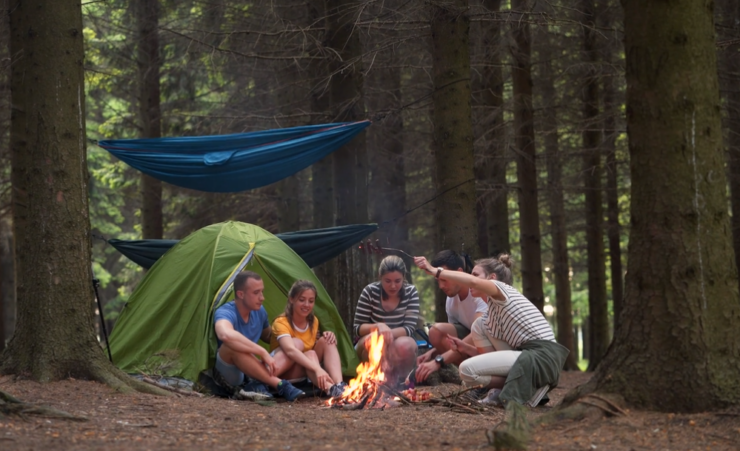
9. Keep the Bugs in Mind
Bugs are some people’s worst nightmare, literally. We just mentioned them getting at your food but we all know that some of them can bite as well. If you hate bugs or can’t stand being bitten by mosquitoes then you probably already have this on your mind. Although some hammocks do come with an integrated bug net, most do not. What’s worse is that many of these hammocks have bottoms that mosquitoes can bite through; so frustrating!
Along with keeping your food sealed there are numerous things you can do to prevent the bugs from eating you alive. Check out my post on this for a more detailed explanation but you can use repellents, smoke, and a buy a non-integrated bug net among other things to keep the bugs away.
I think it’s a great idea to buy a bug net for your hammock. Some companies that make parachute hammocks, like ENO, make quality bug nets that can cover your whole setup. It’s amazing not having to worry about being bitten by bugs.
8. Use an Old Sleeping Bag For Total Warmth
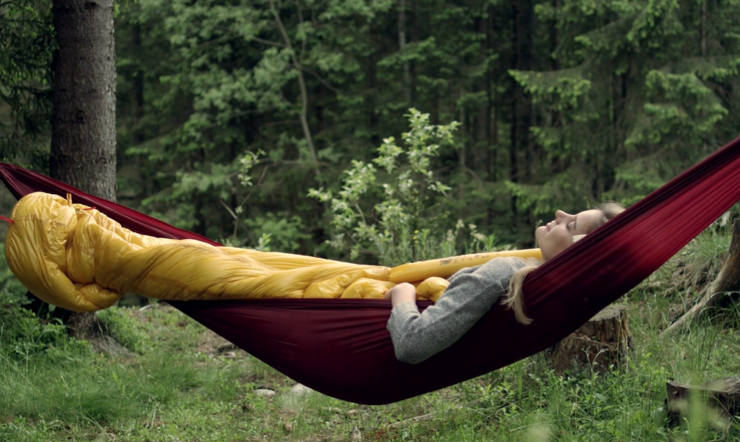
I assume that you already know that you can buy underquilts and top quilts to keep yourself warm in your hammock at night. I also assume that if you needed one and didn’t buy one then you’ve learned how expensive they can be; well you’re in luck.
Check out this do it yourself tip that’s making its way around the web. What people are doing is using old sleeping bags to form a cocoon around their hammocks. How this works is a hole is cut in the sealed end of their sleeping bag and their suspension is fed through it. This genius tip only takes around 5 minutes to set up but can result in a nights worth of comfort.
7. Get Sleeping Pad With Wings
Anybody who has tried to use a sleeping pad in a hammock knows that you are easily able to roll off of it. In fact, sometimes it can be a struggle just trying to stay on. This causes a problem for two reasons; It’s uncomfortable and it leaves parts of your body cold.
Well, there is a solution; wings for your pad. You can buy these or you can make these and it might make a good starter project for someone looking to pick up the crafting skills for future DIY hammocks. If you are looking to buy one then the ENO hotspot is what you are looking for.
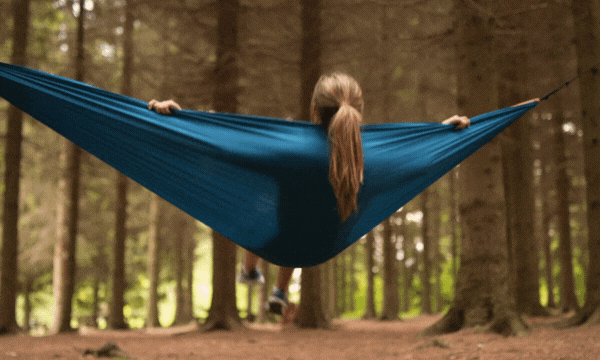
6. Drip line
It is always a good idea to install a drip line for your hammock just to make sure that water won’t run down your suspension onto your hammock if it rains. This is really easy to do. Some people use carabiners with edges that will allow the water to drop the ground when it hits it. This is a really good idea because it allows the water break to become part of your regular setup.
We have seen people put little rubber O-rings around their suspension, tie knots with little pieces of cord, use metal rings, and even just throw a bag on top. One thing you want to do is make sure that your water break is toward the end of the exposed line so that more water doesn’t get on the line after it has dropped to the ground.
5. Buy a Whoopie Sling
I’ve mentioned this a few times on the blog, but I like whoopie slings. I suggest that you pick one up for your ridgeline but you can also use them for your suspension; there are quite a few people who do. Even if you don’t use it for your hammock it is nice to have an adjustable line with a loop lying around.
You could try to make one of these but it’s easier to just buy one plus they are fairly inexpensive. There are a few places that sell them. What you are looking for is called an adjustable Whoopie Sling.
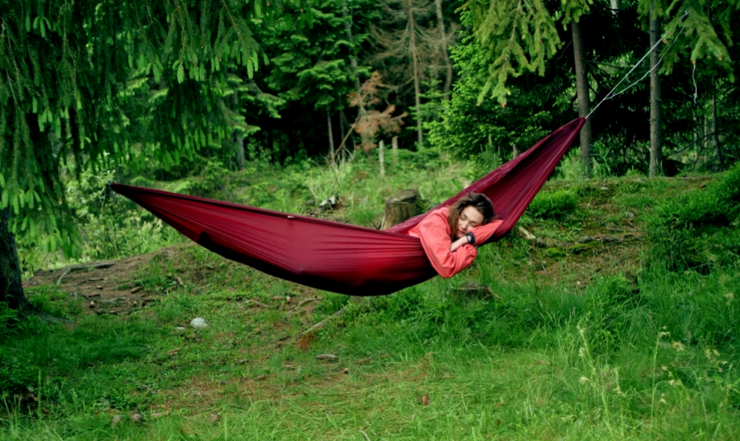
4. Choose Your Location Wisely
A lot of times as hammock campers we like to brag about the versatility of using our hammocks; however, there are some spots that might not be so good. You need to remember that you have to jump out of your hammock in the morning and often things are wetter then than they were at night.
Make sure you choose your location wisely, you want to make sure that you have a place that you’re not going to get wet, that you’re not too exposed, or where anything is going to fall on you. Remember to always be proactive and think about how things are going to be in that location in the future.
3. The 30% angle
Maybe you know this or maybe you don’t, but the angle in which your hammock meets your suspension should be 30 degrees. To find this angle you want to pretend that there is a line going from the carabiner (or the end your suspension) and the tree; you then measure the angle.
It’s hard to explain so here is a crudely drawn image:
2. Get a Soft Shackle
We do like carabiners but they are heavy. There are situations where you wouldn’t want to carry a lot of weight. When these situations arise we recommend a soft shackle. These are also good if you’re clipping metal on metal and you find it’s making noises (read our post on that).
You can buy a soft shackle or you can make one, however, they are pretty cheap and are not all that simple to make. If you’re picking up whoopie slings then you might want to pick these up too. Many of the places that sell one will sell the other.
1. You Can Adjust it Later!
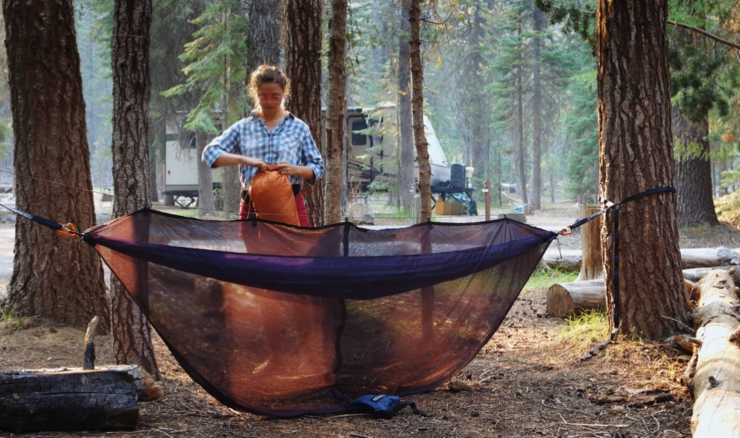
One thing we see people forgetting, and it’s a little funny (sorry if that’s you), is that their hammock is adjustable after they set it up. If you have a whoopie sling it’s super easy to adjust it without even taking anything down.
If you are feeling uncomfortable in your hammock then just get out and adjust it, it is super easy. Another situation in which you might have to adjust it is if someone else is using it before you and they prefer their lay differently. We said above that a 30-degree angle was ideal; however it doesn’t matter, it’s totally up to you.
End
Well, that’s the end of my post I hope you are able to find something that is useful to you whether you are thru-hiking or just camping beside your car. There are lots of other tips and tricks that could be useful in certain situations, I am sure I missed a few, so please let me know your tips and tricks in the comments below. Remember that as long as you are being safe, there is no wrong way to hammock.
Related Content

